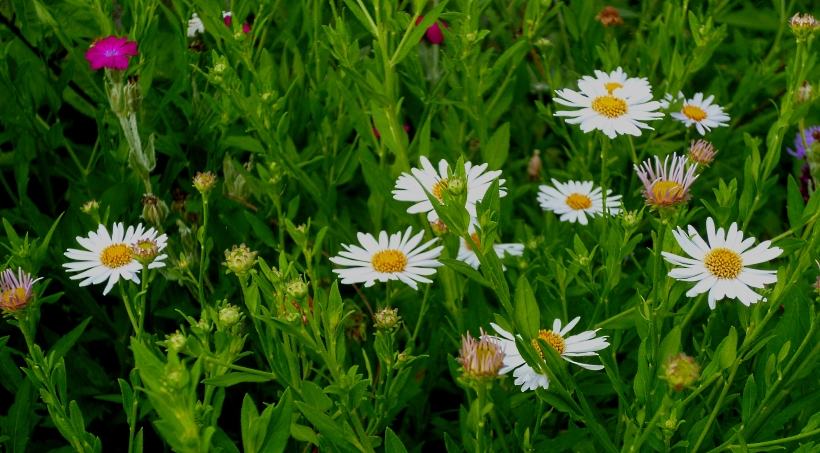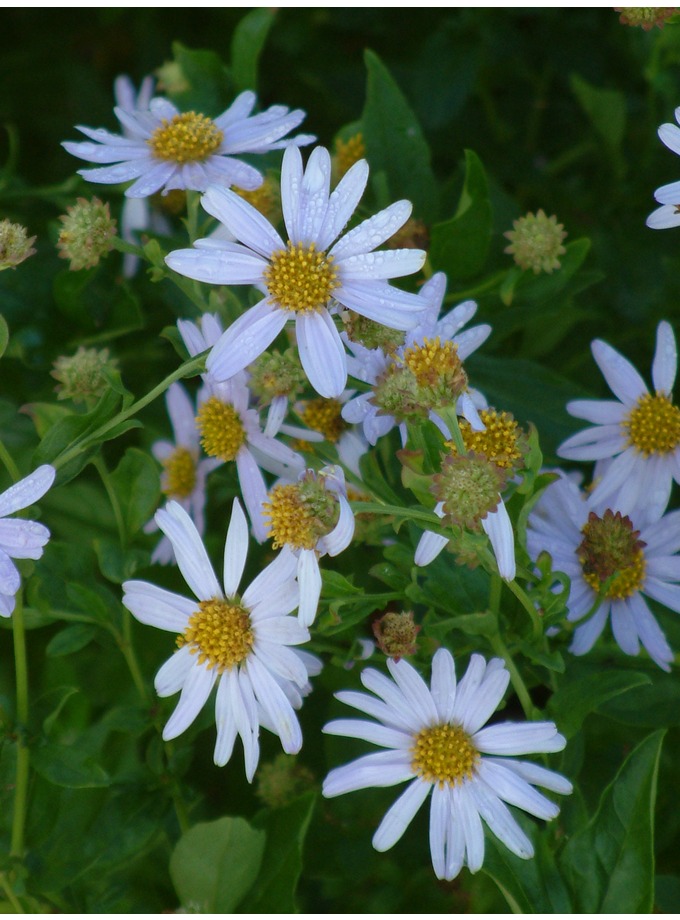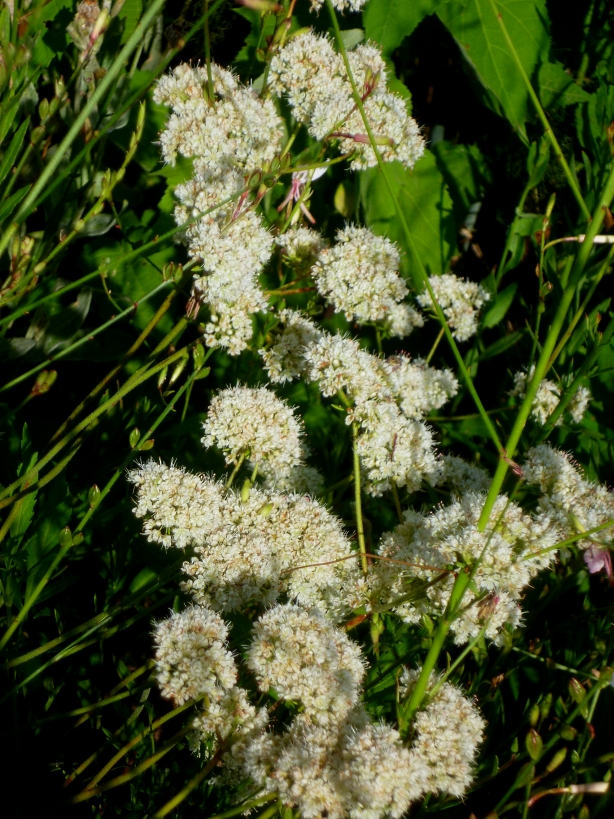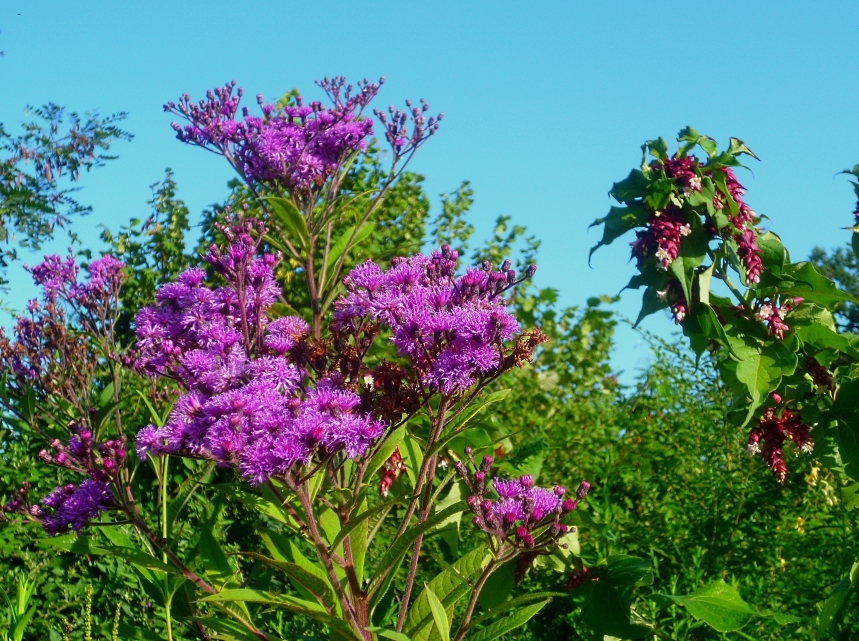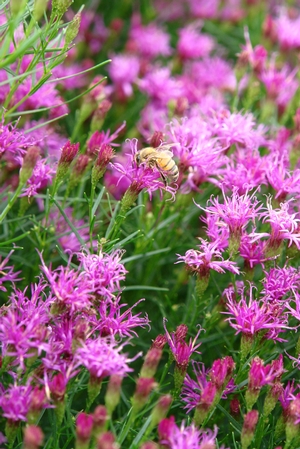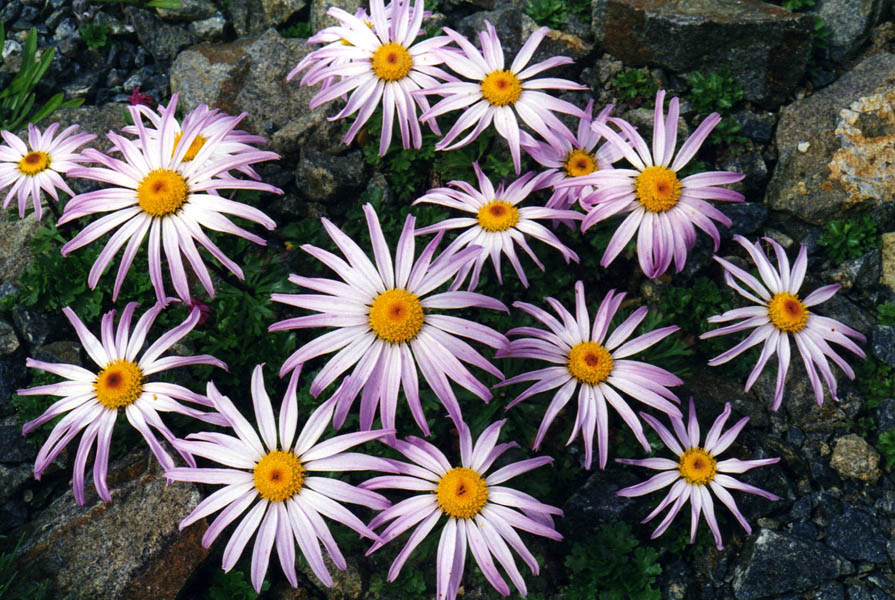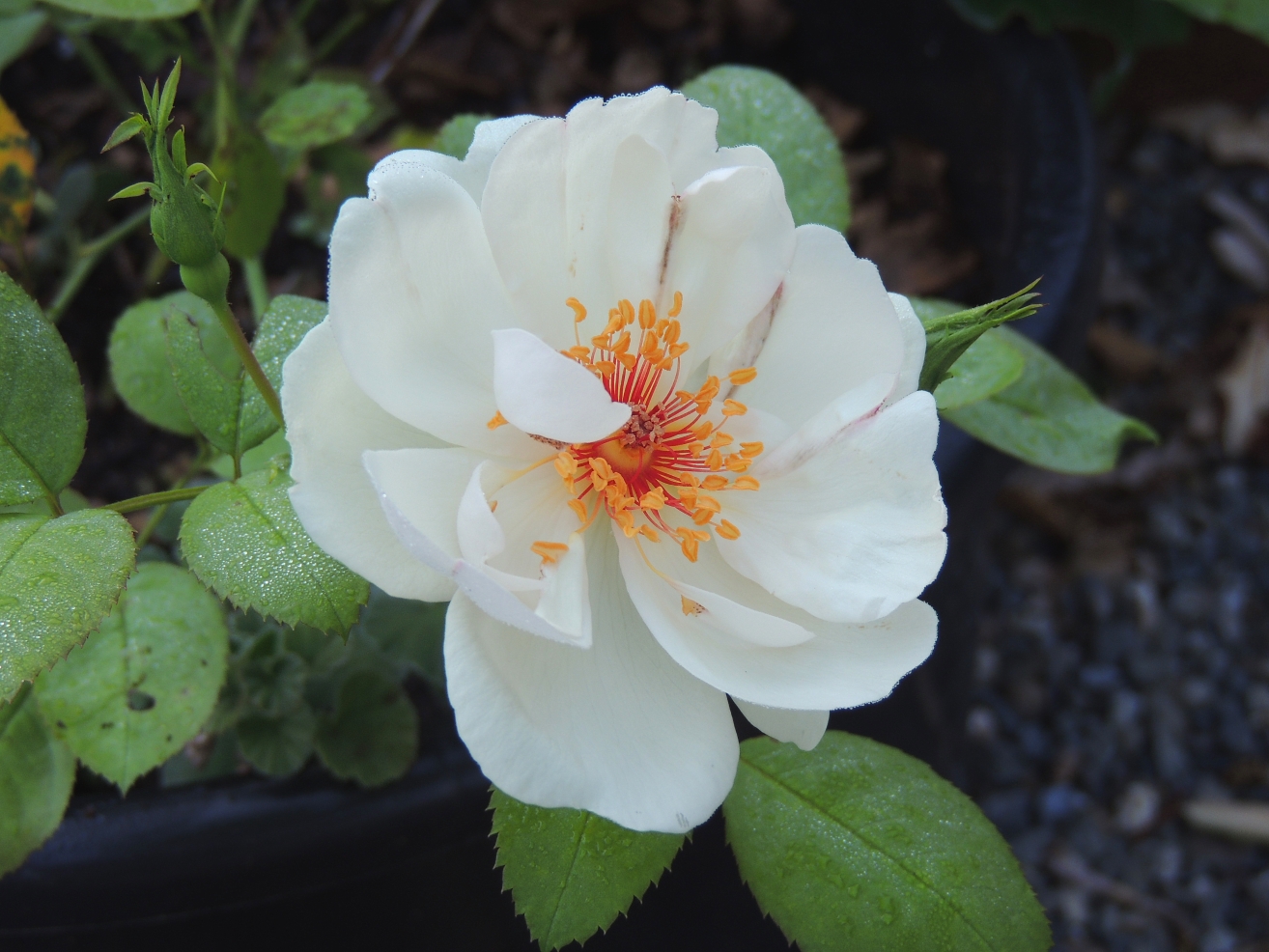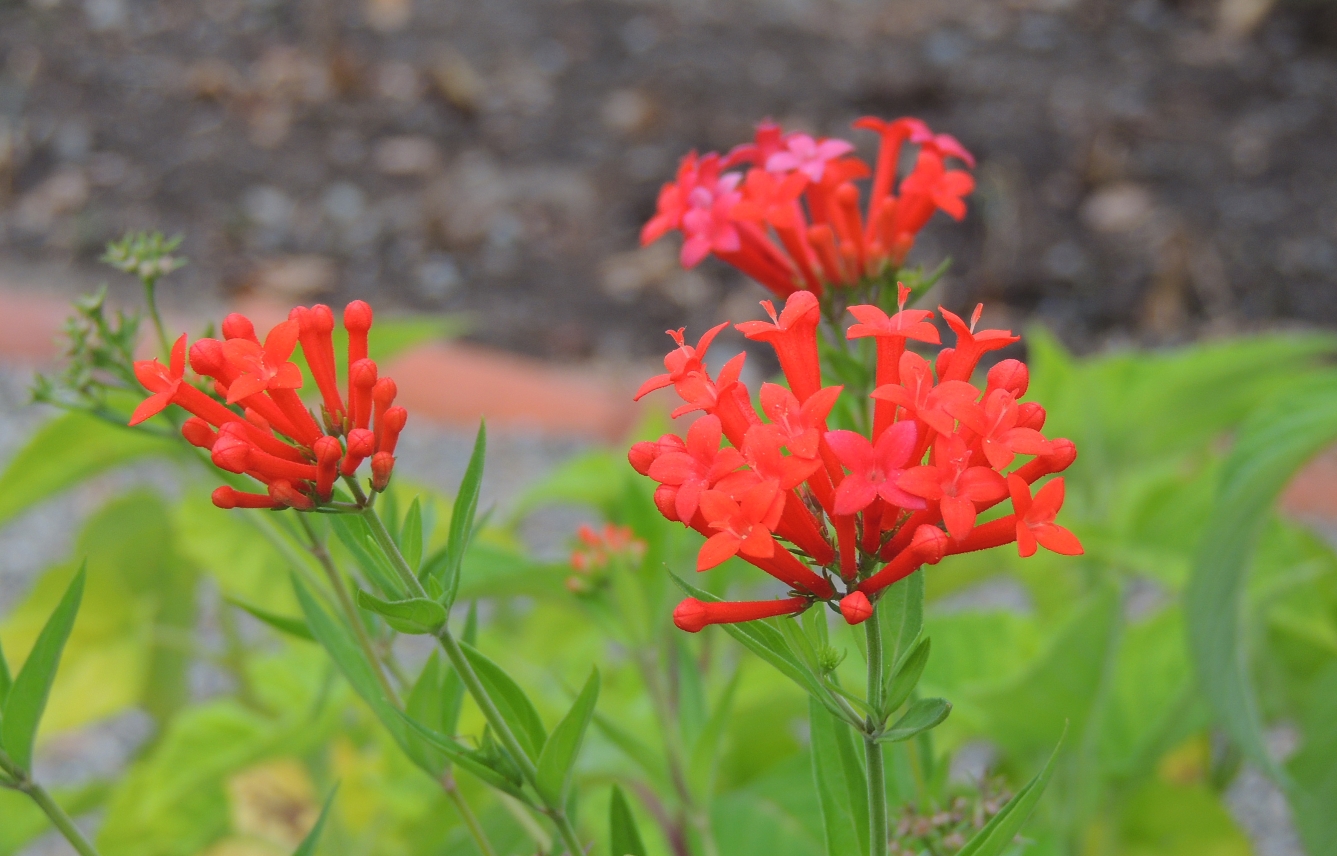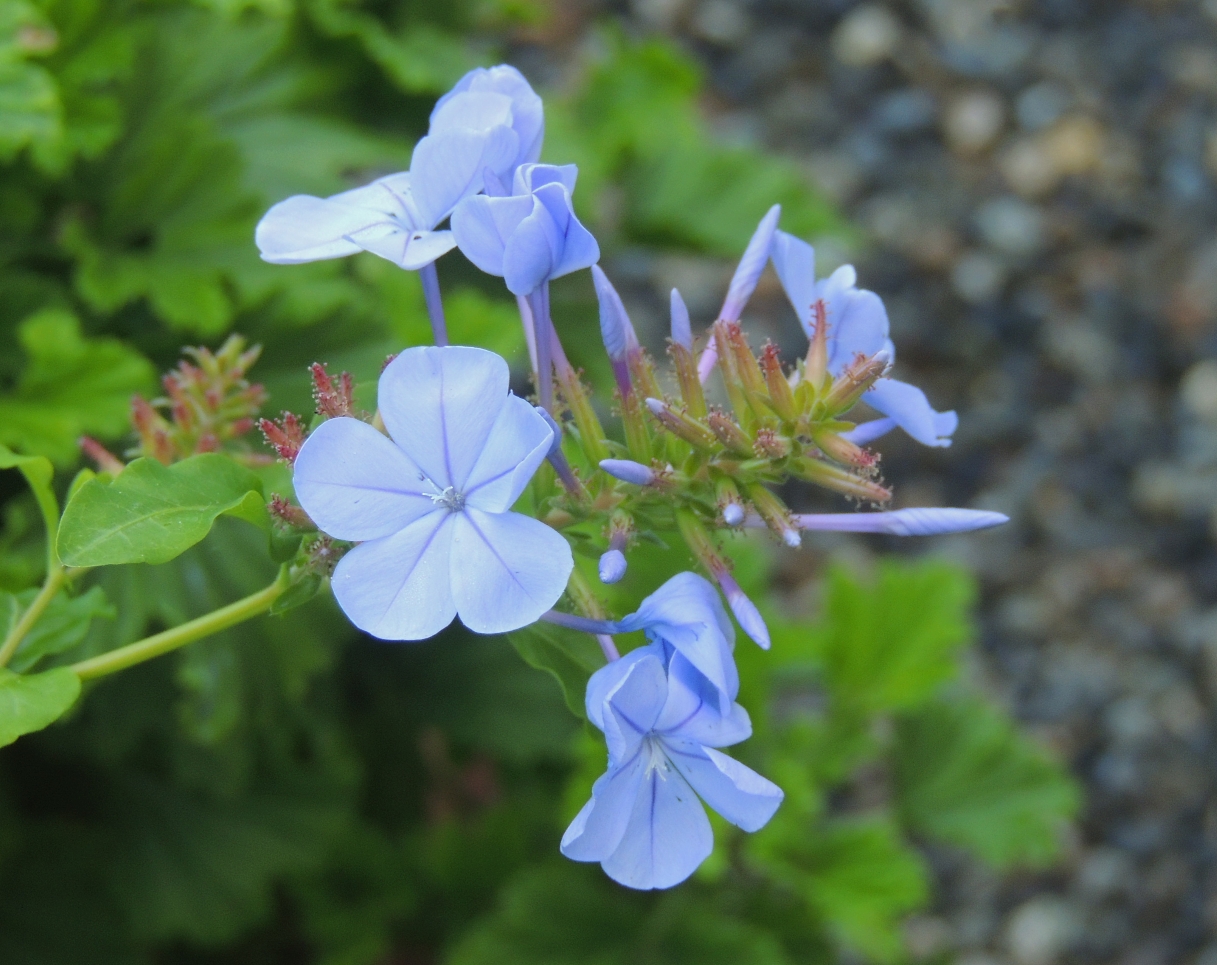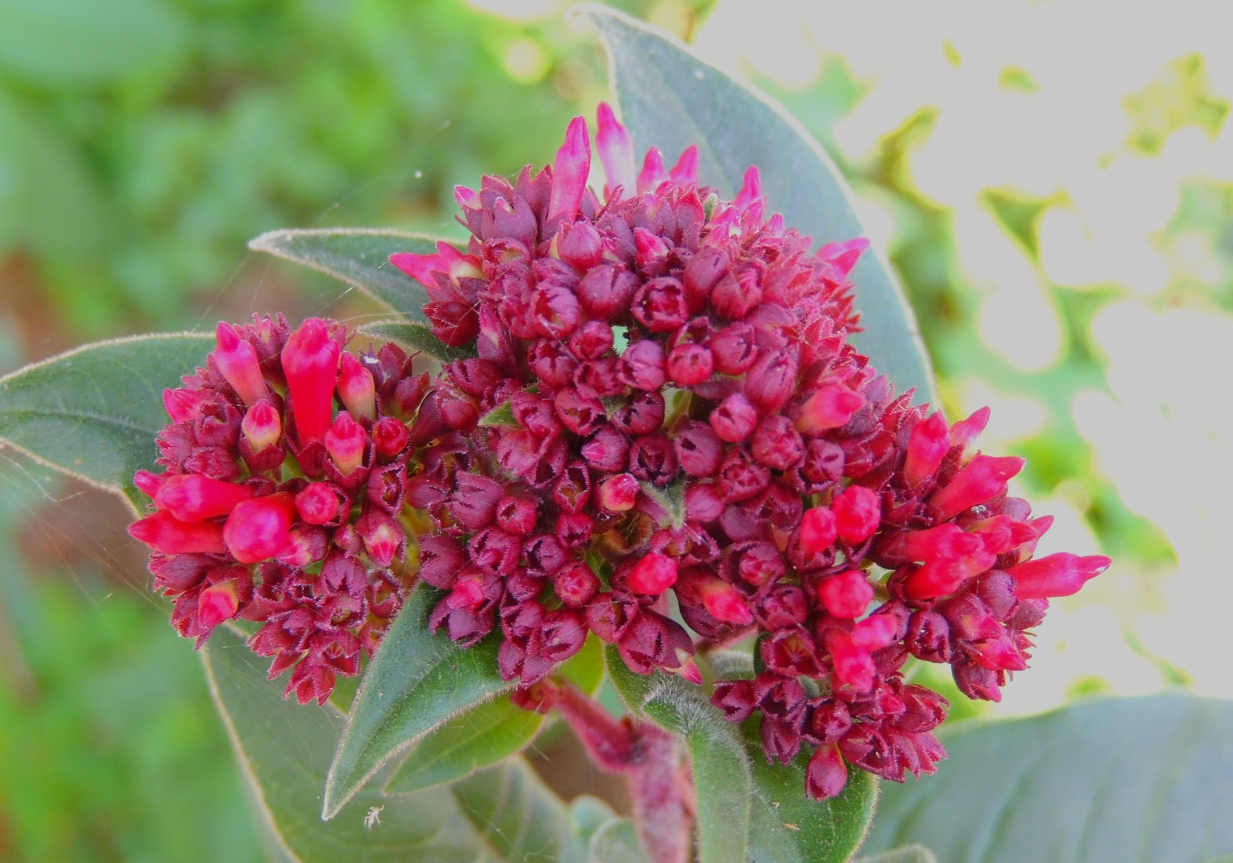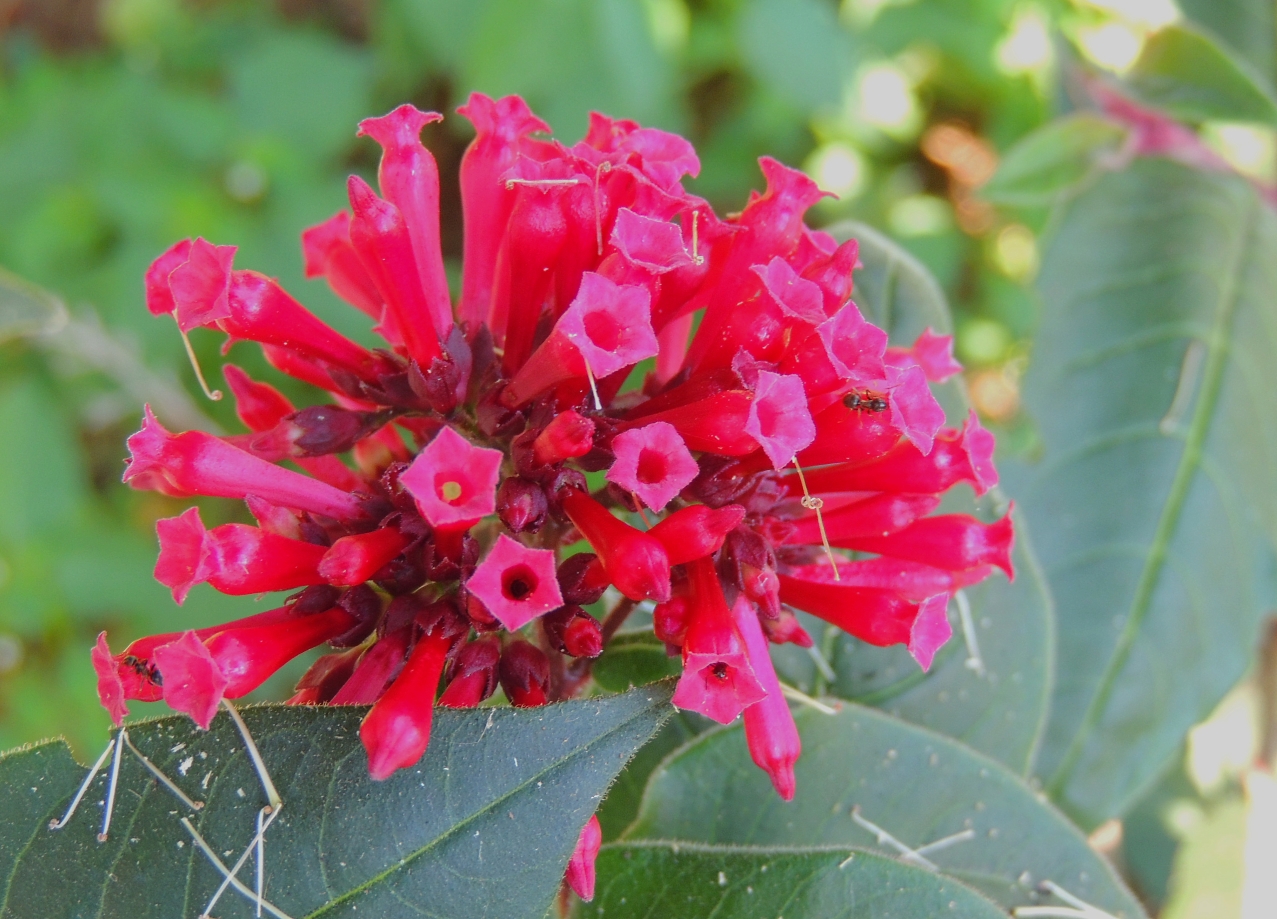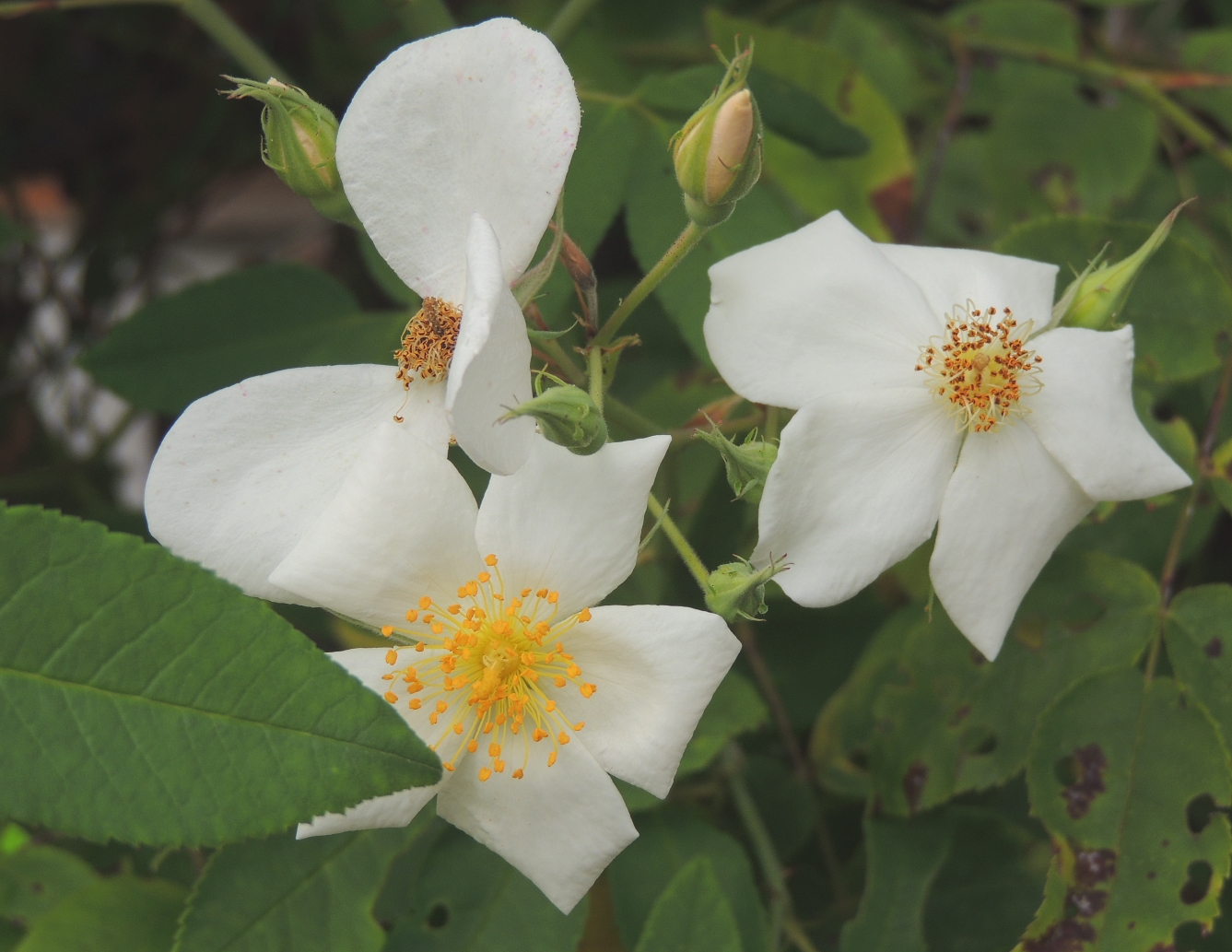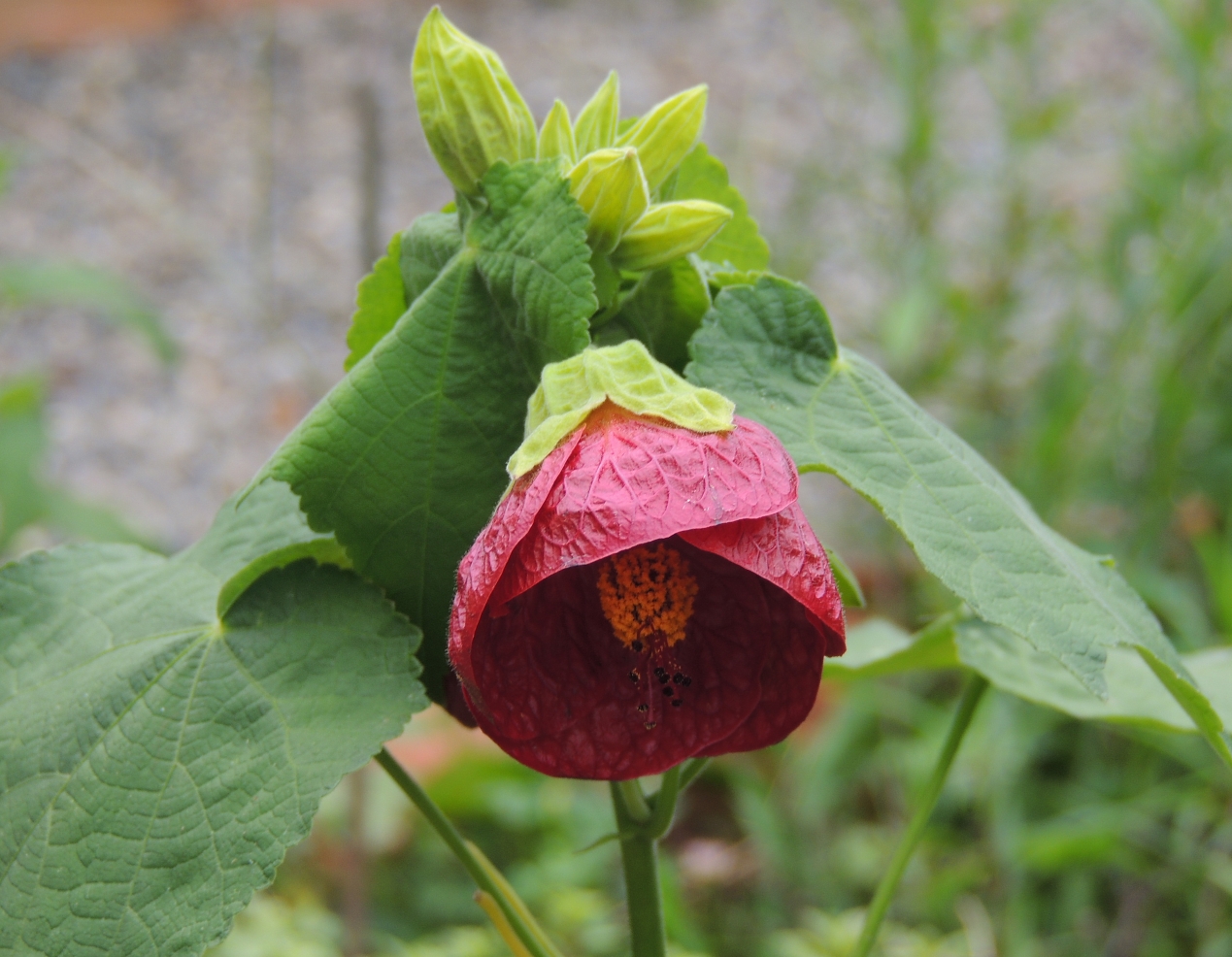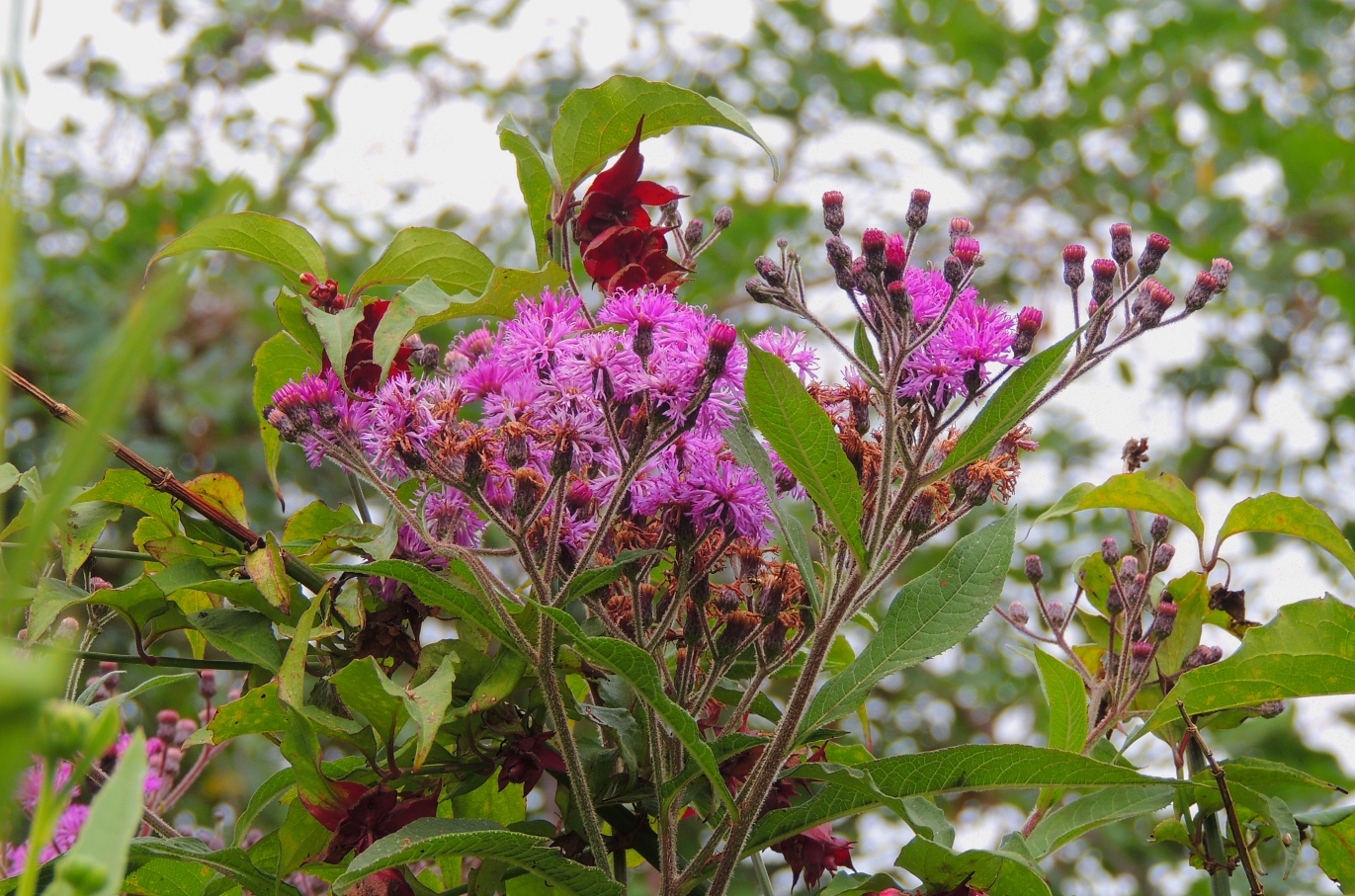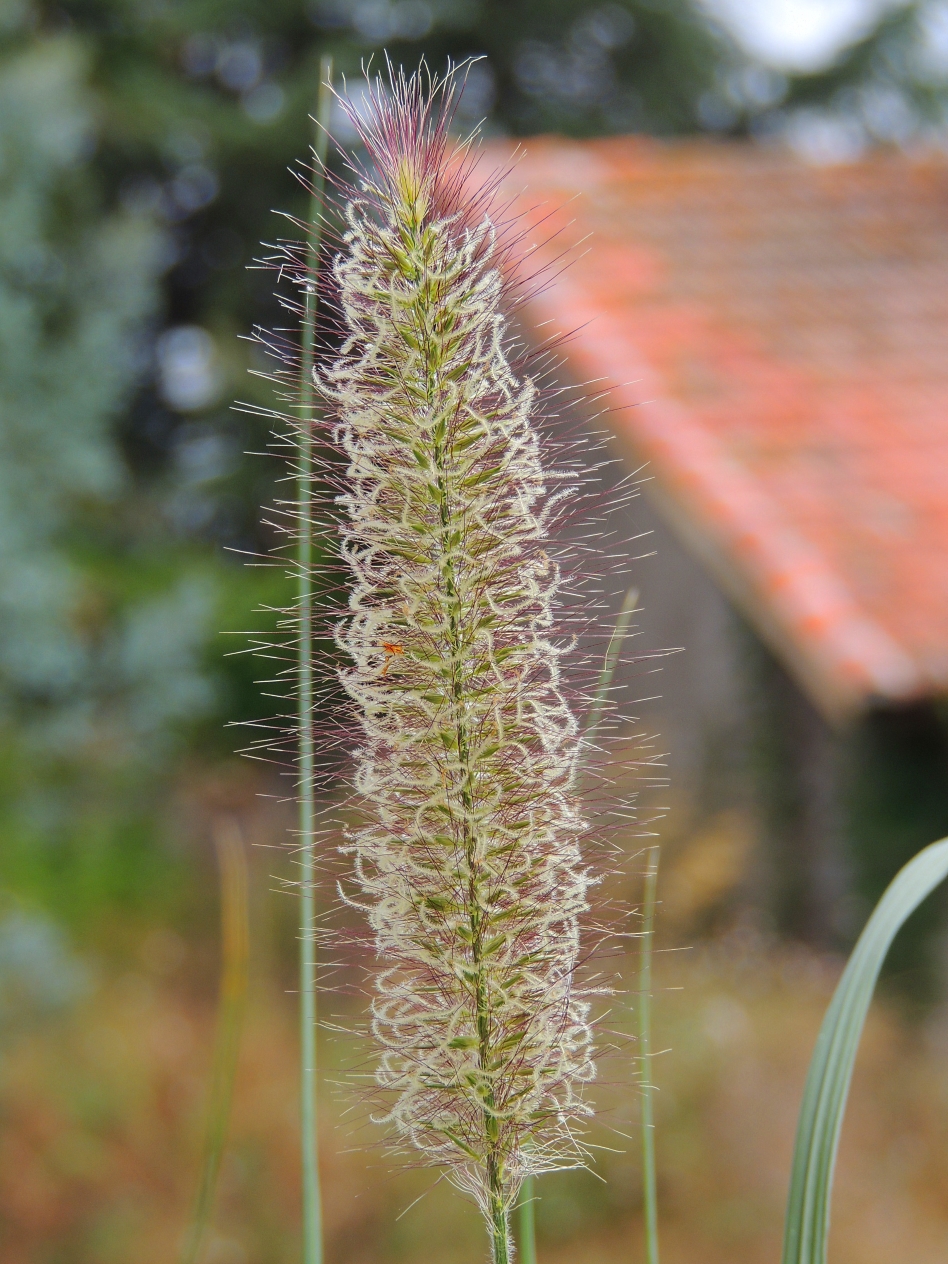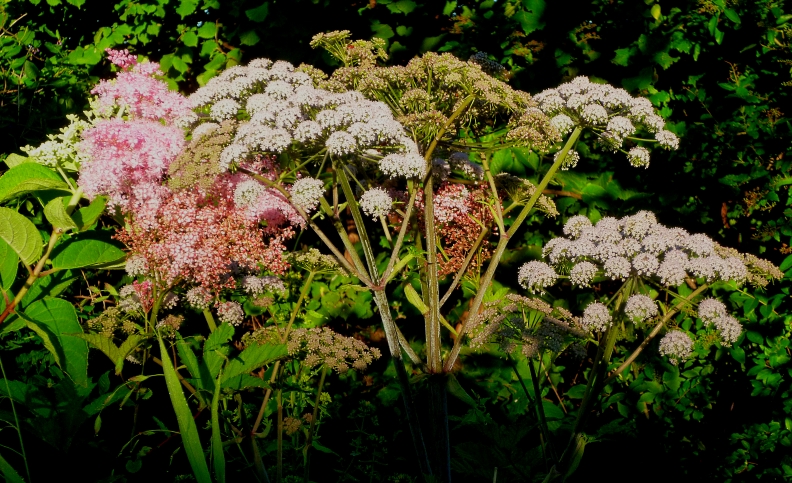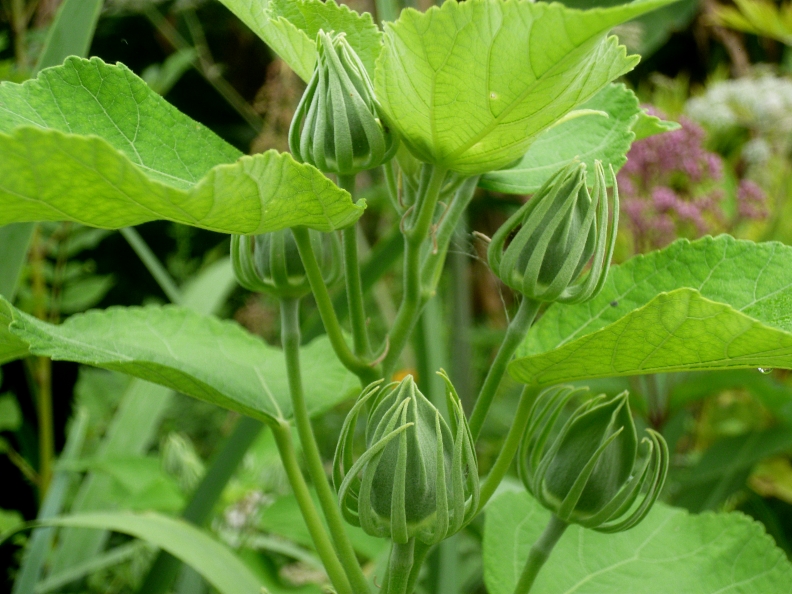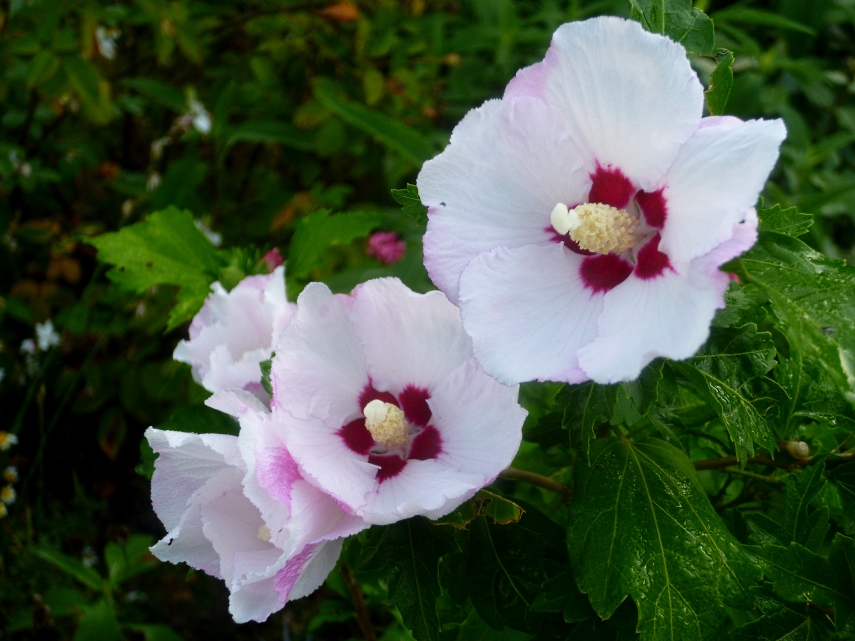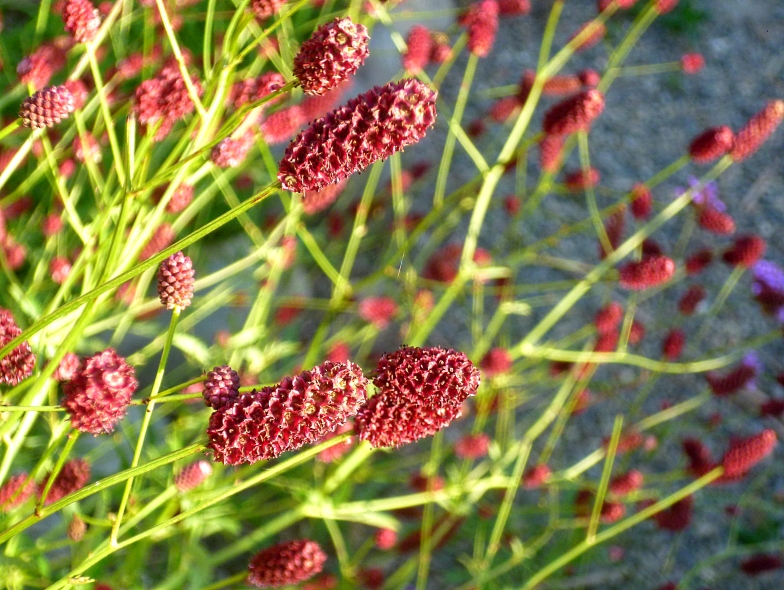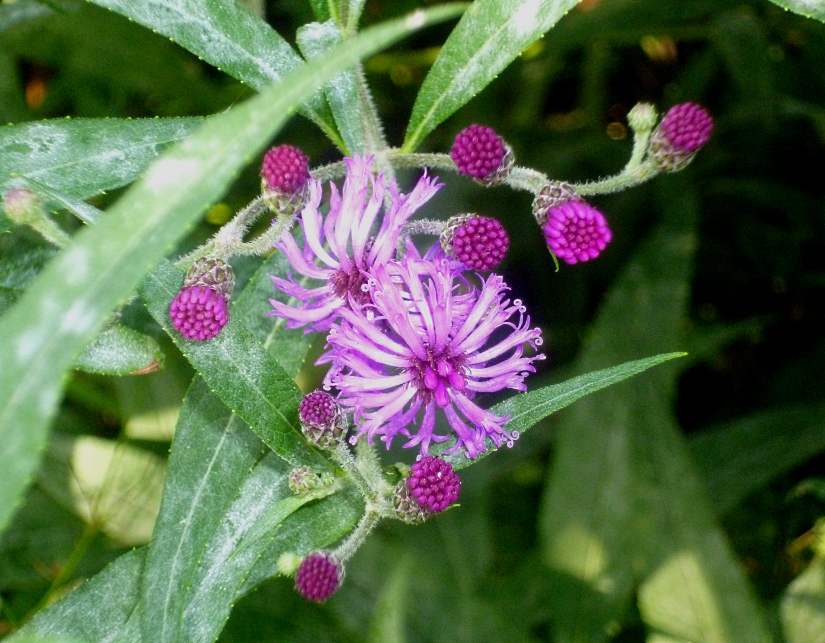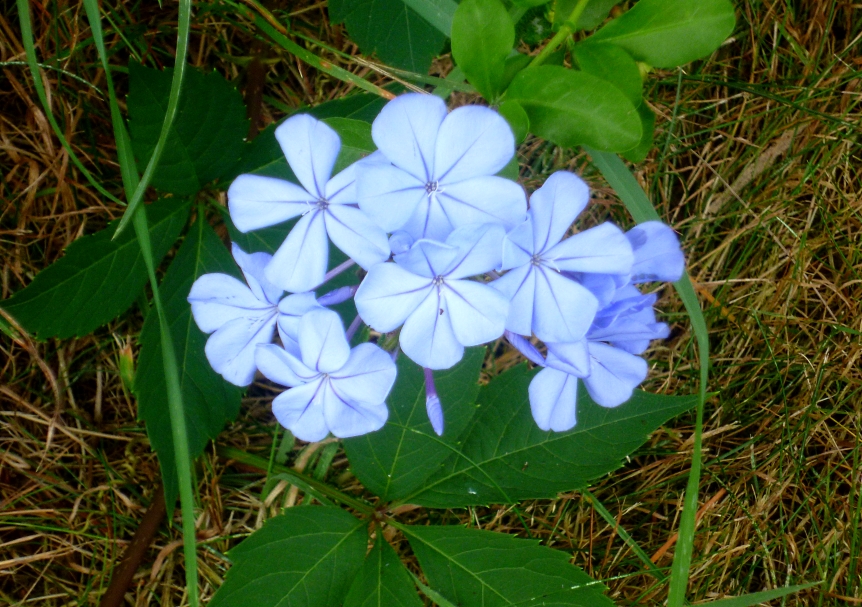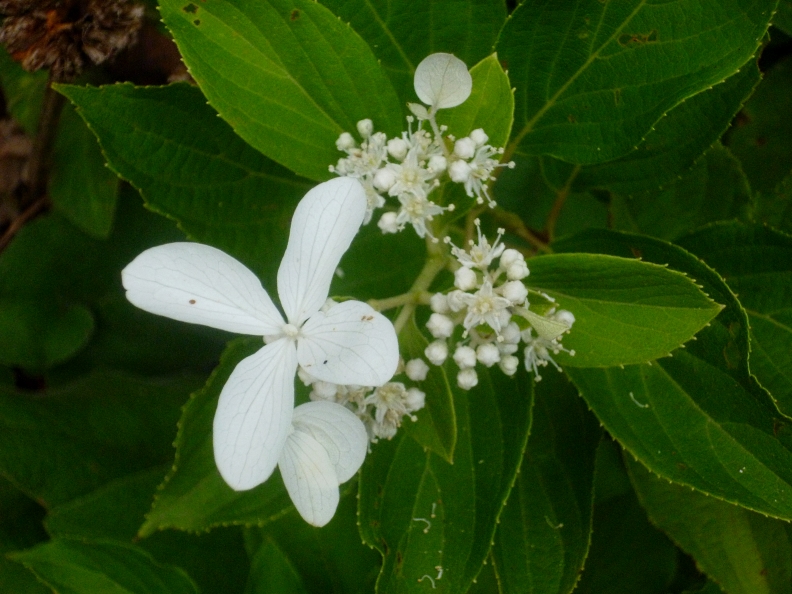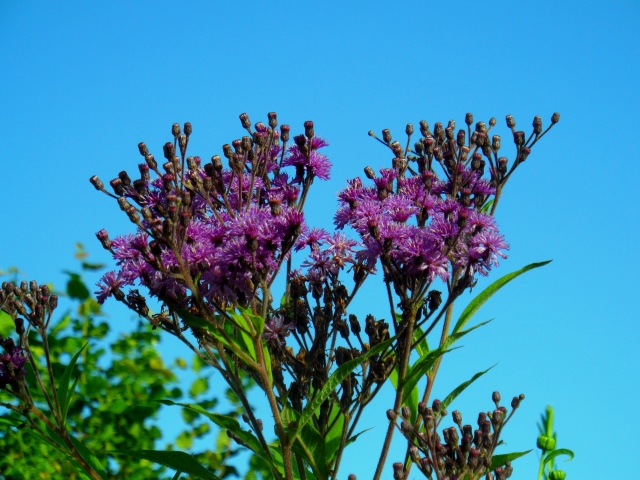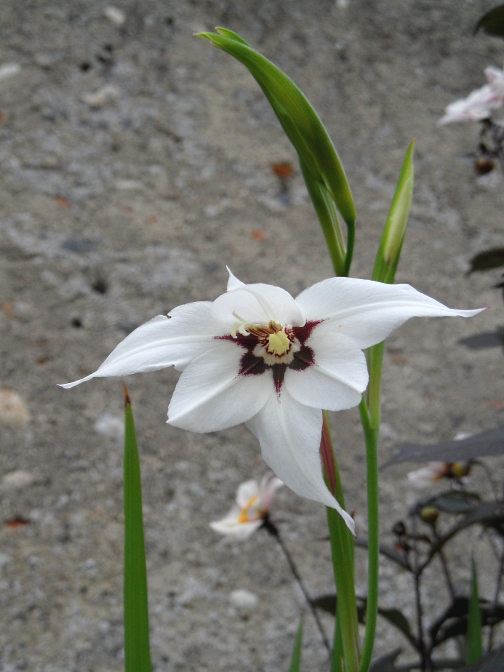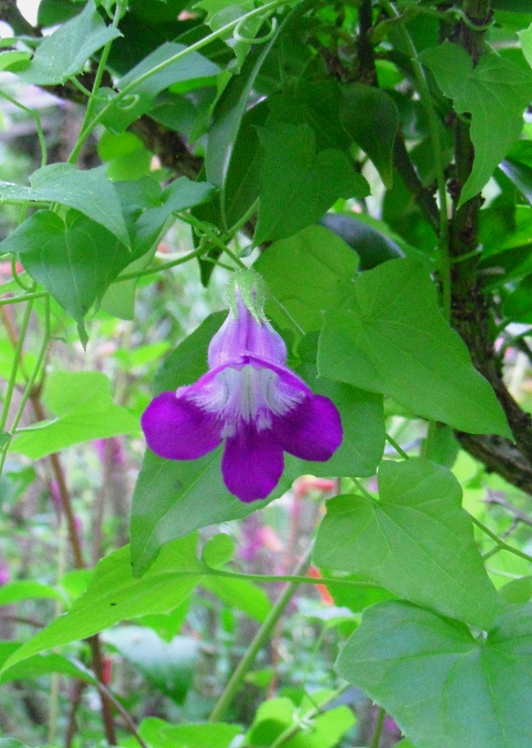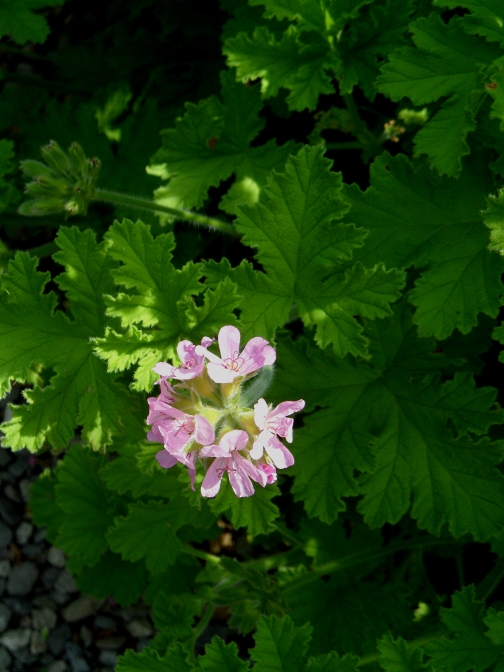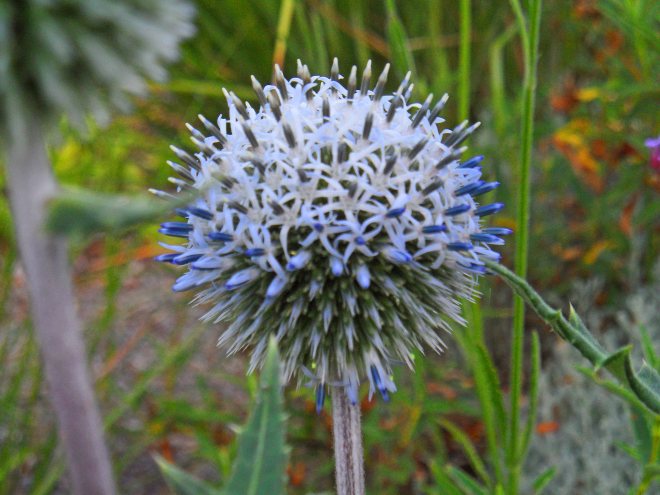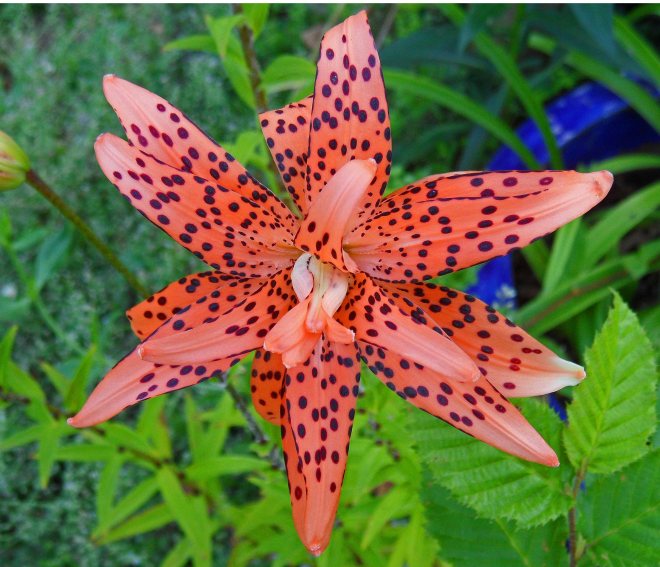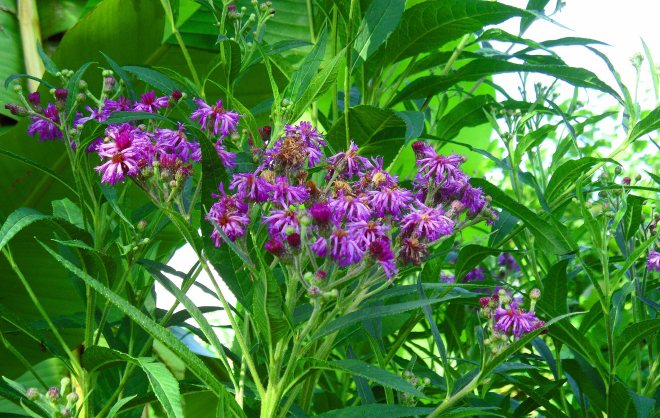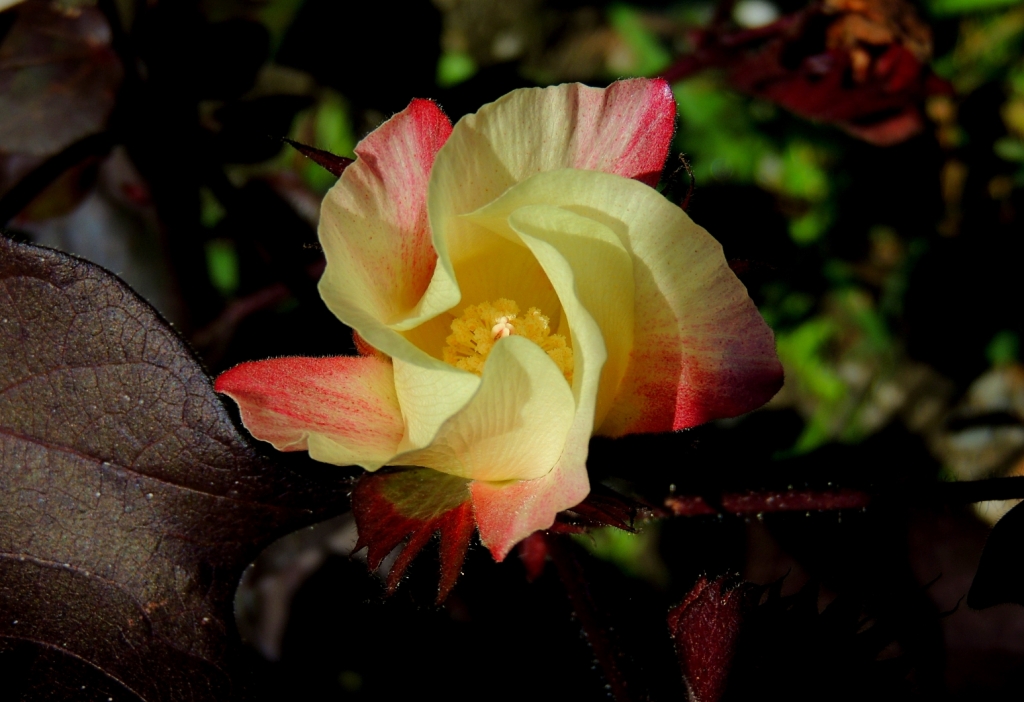
This week it has been all change. Fast forward to Autumn, or pre-Autumn if you prefer, with cooler nights and a couple of belting rainshowers. For those plants toiling under the heat, this has proved too tough a transition with many of them lying down with the effort. But for others, like my surprise of the summer, Gossypium hirsutum, it has been a real tonic. I am no Scarlett O’Hara, but I am really chuffed with my baby cotton plants. The glossy plum-coloured foliage is such a thrill in the heat, the upright stance makes such a good statement and these simply gorgeous, if short-lived, flowers keep coming. The flowers vary in colour, I don’t know whether this is to do with heat or coolness, but the flowers open a lovely cream-colour on cooler days and then heat up to the dark plum colour close to the shade of the leaves. In the heat, they go straight to plum.
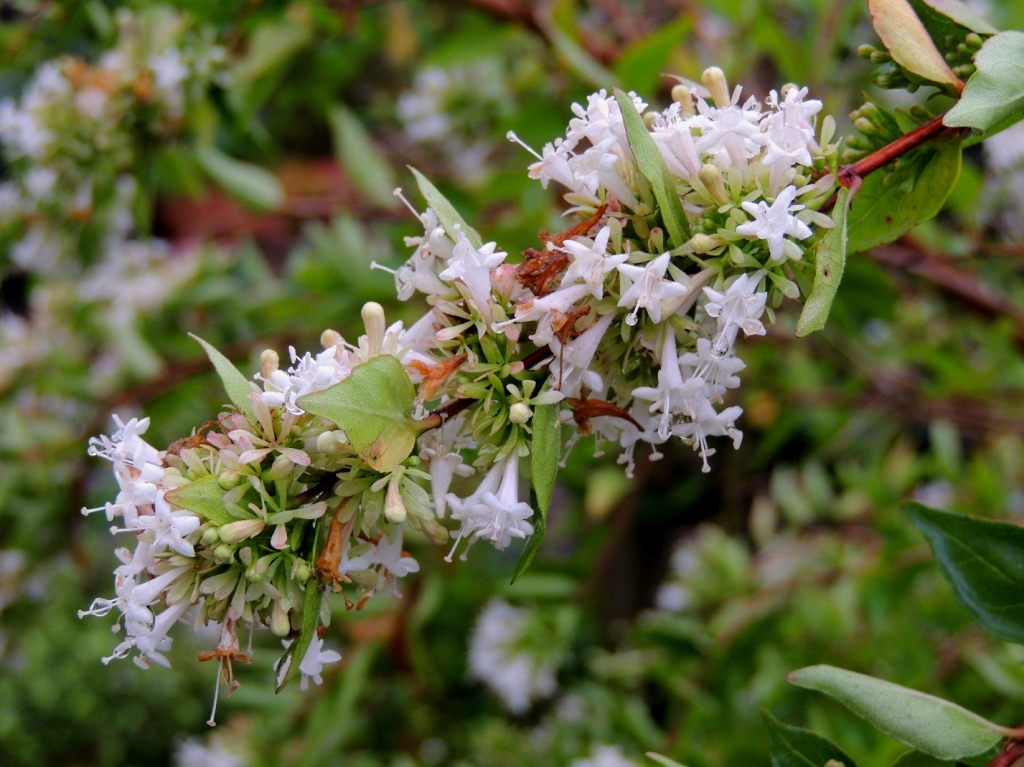
This Abelia chinensis ‘White Surprise’ has hung on despite my indifference to it. I bought it precisely for the later summer flowering and the reputation for serious drought- tolerance. It has delivered on both fronts- but despite being in the garden for 4 years, this is the first year that it has really caught my attention. I think that my problem was with somewhat twiggy young growth and tiny flowers- but with maturity comes real beauty. Yes, it is still twiggy, but this is much less noticeable now, and the perfume of the flowers, and their size, has really developed- and it has given over and over this summer. So I eat my hat.
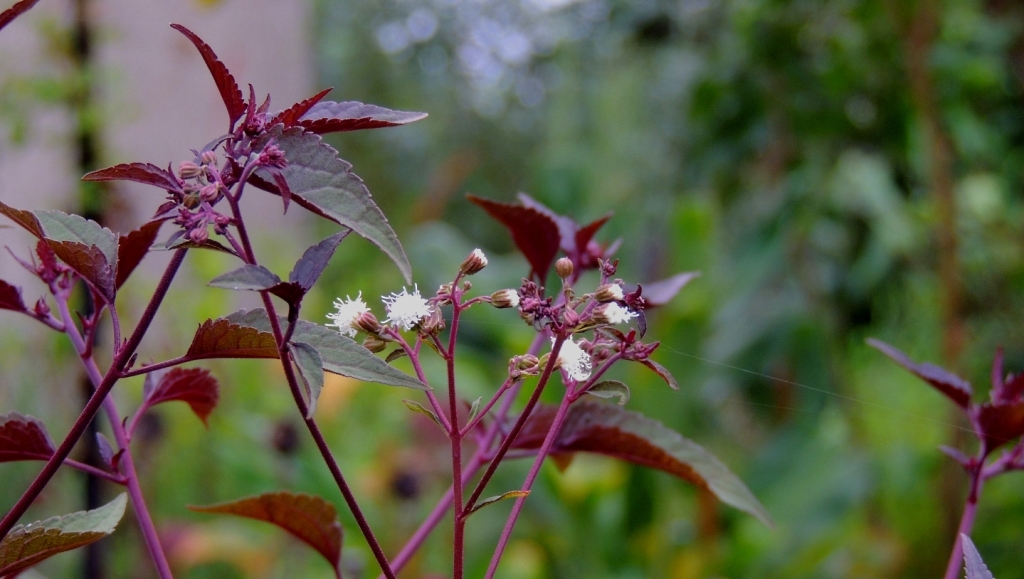
This plant, newly renamed from Eupatorium rugosum to Ageratum altissima Chocolate’ or even Ageratina, is a real delight. Fabulous dark plum, almost black foliage that likes shade but will take sun, likes damp but will take much drier with time- this is a plant that really grows on you. The flowers come in September, and sweet though they are, tiny and cream-coloured, the main show is the foliage. If it flags in the summer, a bucket of water now and then will keep it going. For this small effort, you get a steadily growing clump up to 1.5m of upright, structural pluminess- what more could you want?
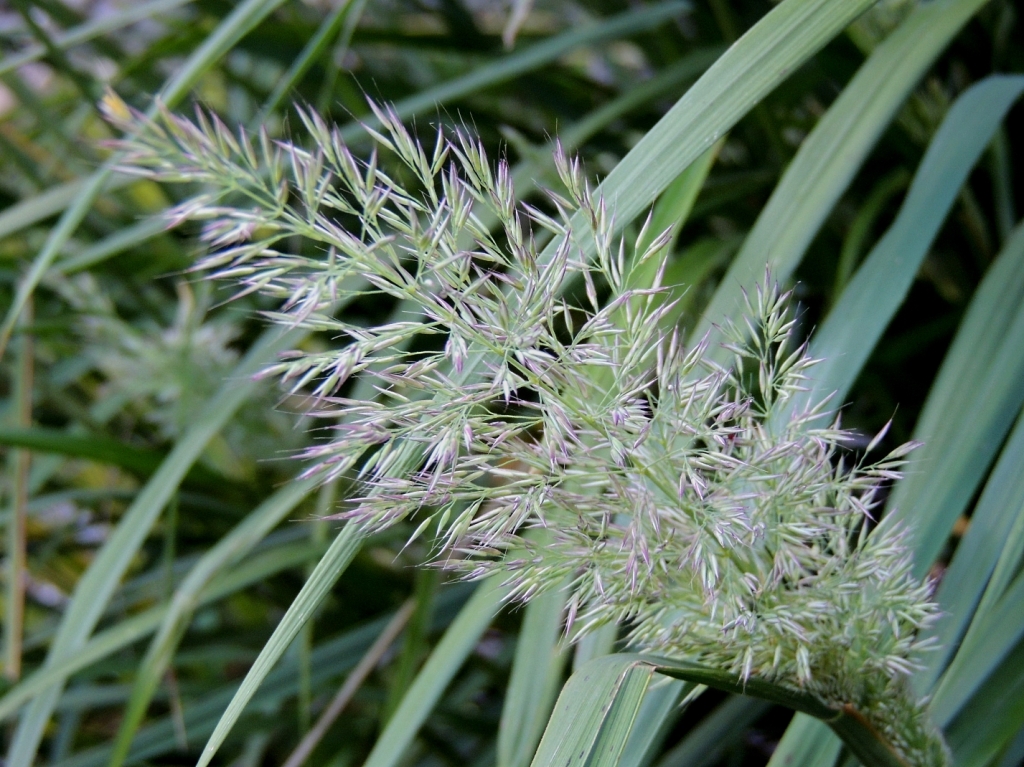
Here is another lovely thing that you have to wait till September for. This used to be Stipa arundinacea and is now called Anemanthele lessoniana. I moved two big clumps two years ago, and they have taken their time to get over their resentment. But, interestingly, now being in shade and full sun, rather than constant full sun, their colouring has changed. The flowering heads are greener, more silvery-green than pinky-silver and both clumps are enjoying the slightly cooler conditions. They look wonderful and even make the washing line area look, well, dramatic.
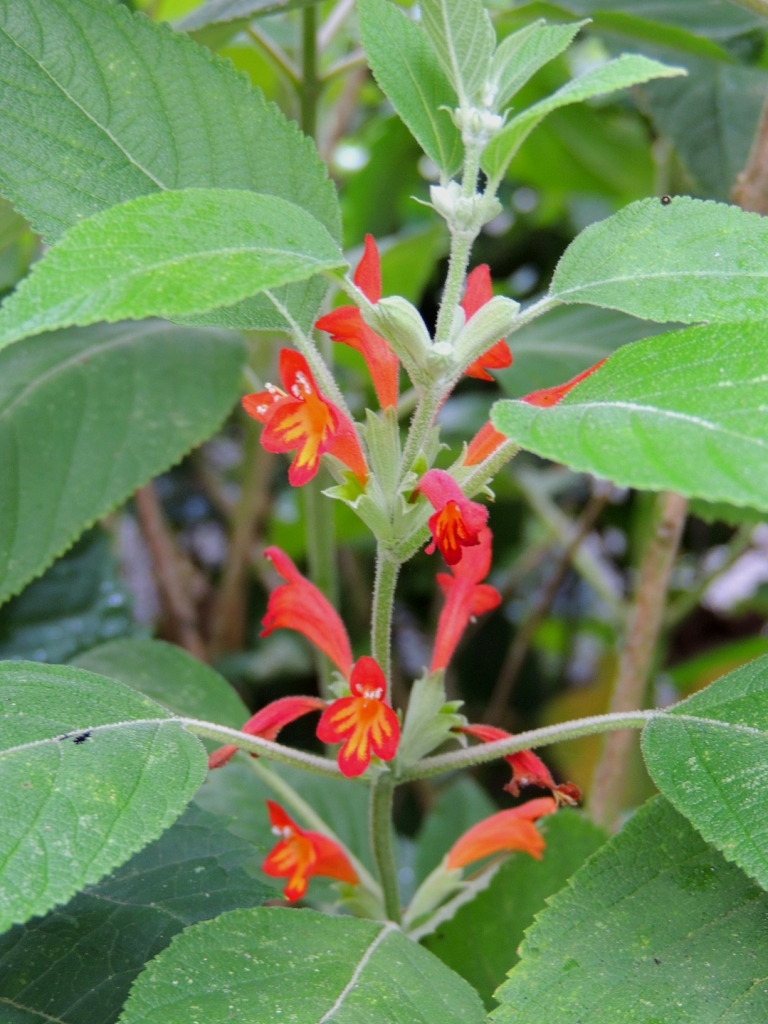
And another lovely September entrant- Colquhounia coccinea. A buddleia cousin, so read big, bushy with fast growth once warmth starts in the late spring- with the risk of looking utterly dead before that. It rockets up, so plenty of space required and elbow-room. Then, in September, the flowerheads pop up in between the branches. Very pretty, but they can be shy so don’t miss them. It is borderline hardy for me really according to the books. But, I did my best to protect the clump with some fleece during the coldest winter nights, and then hoped for the best.
It does take a while to be willing to risk growth, but I held my nerve. Only snag? Bindweed has decided to move in. So I have seed for Tagetes minuta, which I will grow on in February indoors, and plant out next year. This has been brilliant wherever I have used it elsewhere in the garden, so I have complete confidence it will do the trick.
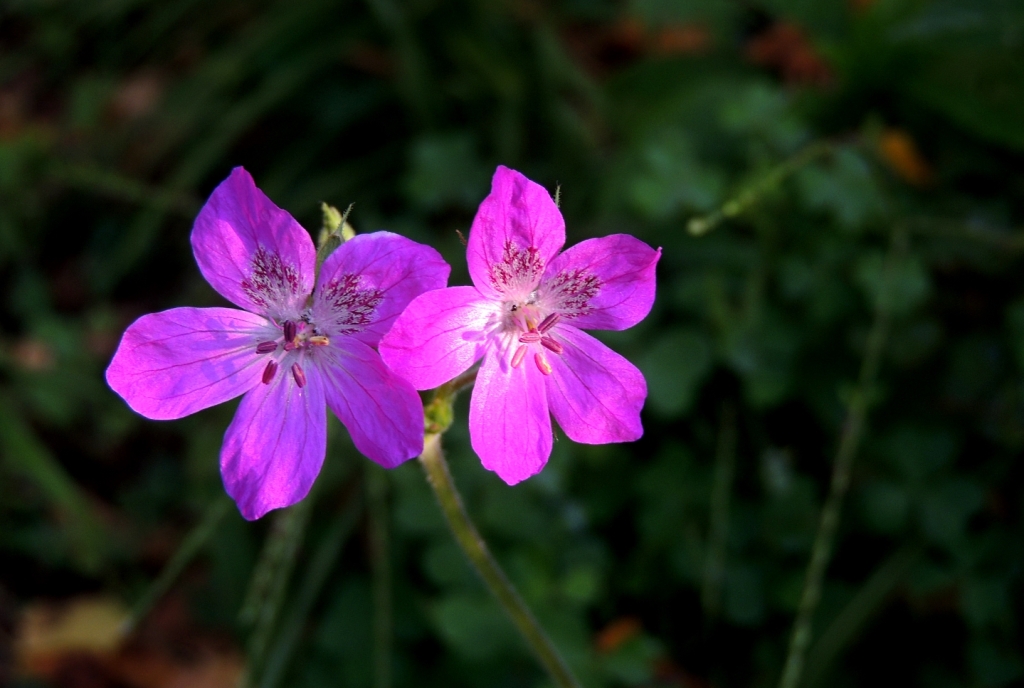
New flowers with the rain on Erodium manescavii. Just the way, you grow something and it comes up a treat, so you sow more seed and …nothing. Never mind, I will give it one more go in the spring.
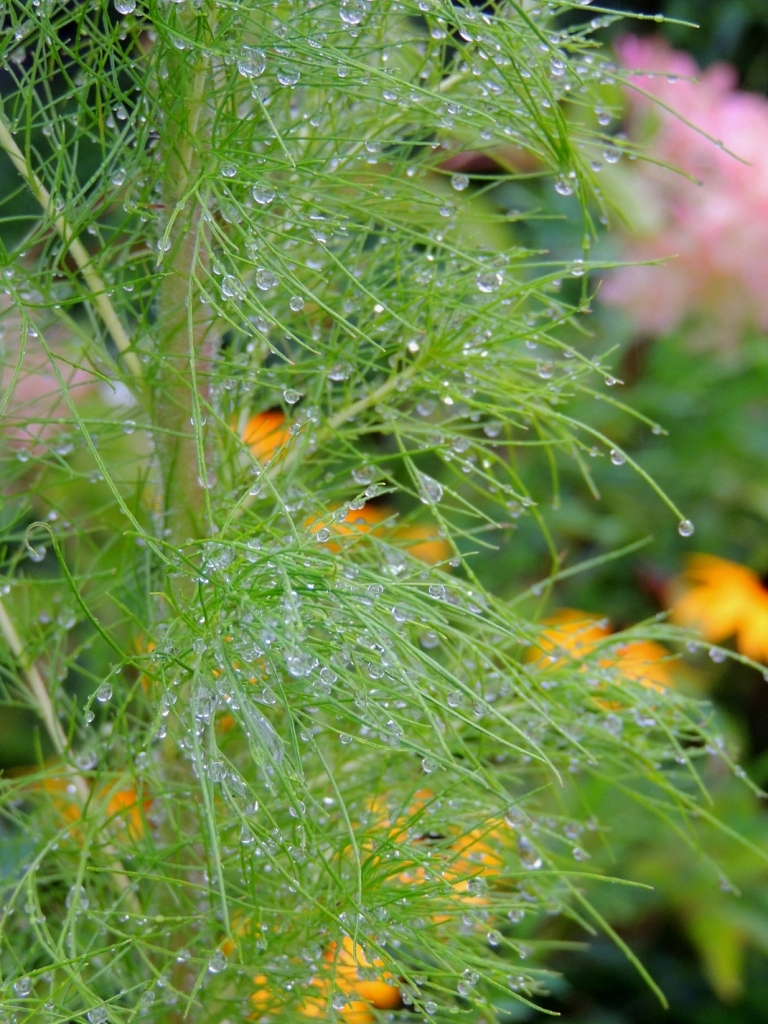
This plant is a bit of an oddity, but I love it. Eupatorum capillifolium ‘Elegant Feather’ makes a tall column of feathery green-ness and that’s it, but it is so pretty in amongst other plants and I wish I had more of it. It needs more damp than I can give it, but one of three plants has survived and make a comeback every year. I am not going to tempt fate.
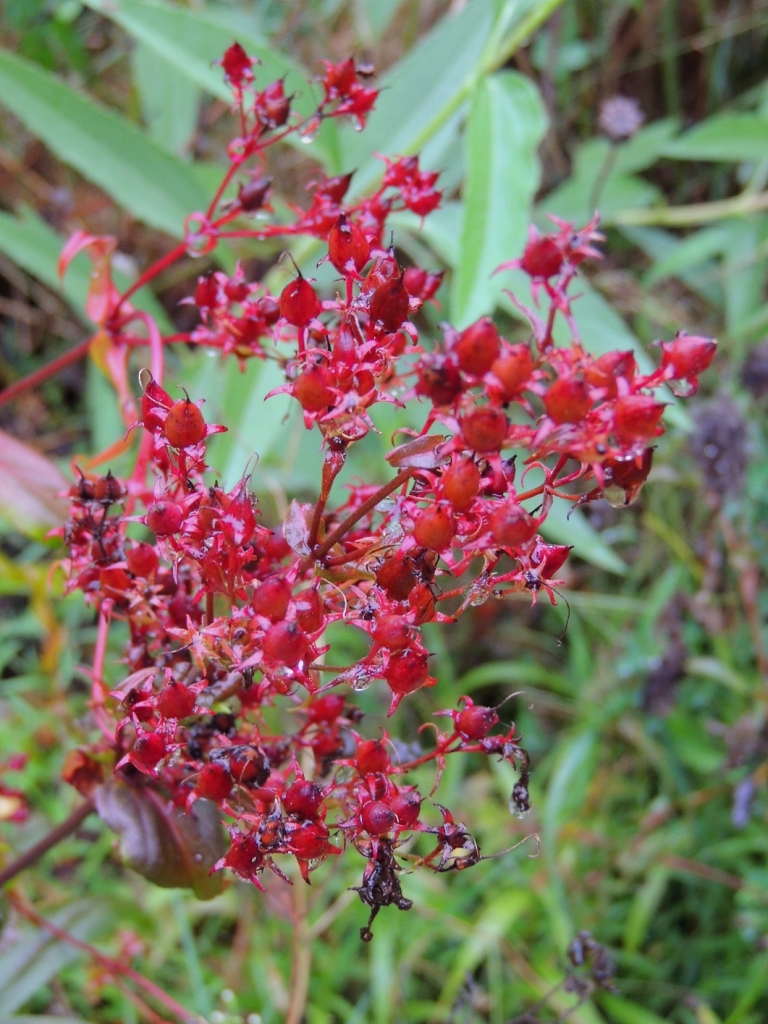
Penstemon ‘Dark Towers’ is making cranberry coloured seedheads right now- I adore them, they look so bright and juicy.
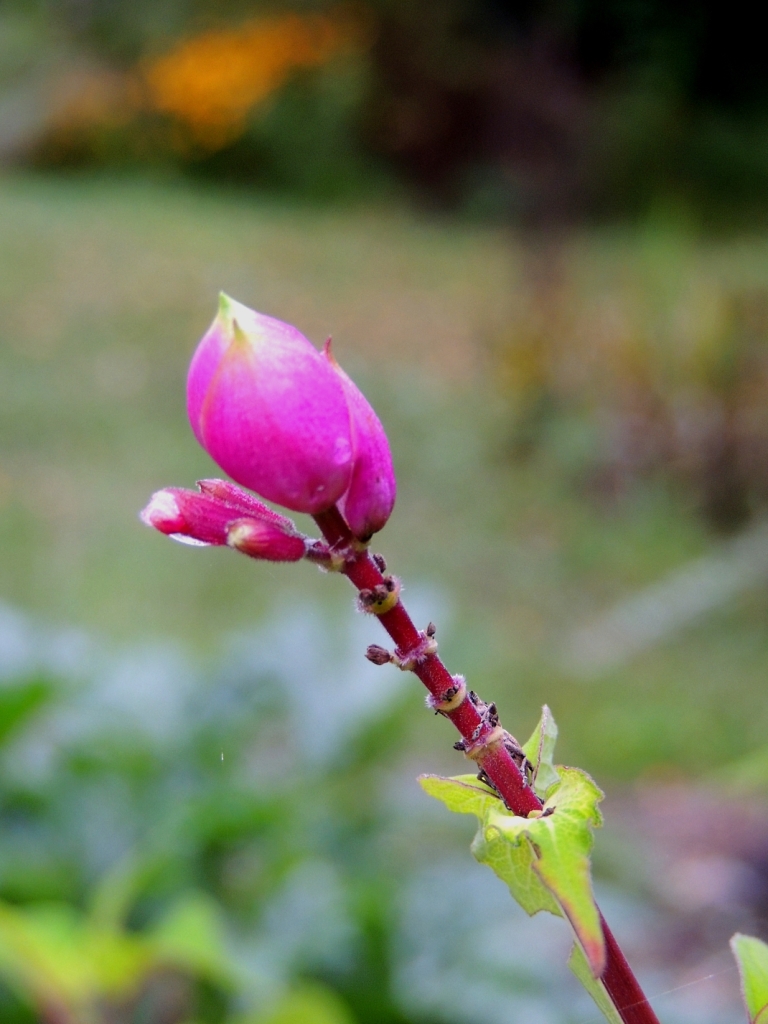
I like Salvia involucrata ‘Bethellii‘ for the emerald-green elongated leaves which are very elegant and hold the attention until the buds start coming- whoich can be as late as the end of October in my experience. But this year, we have one on show already. Don’t hold your breath- it takes an age to get from here to a flower.
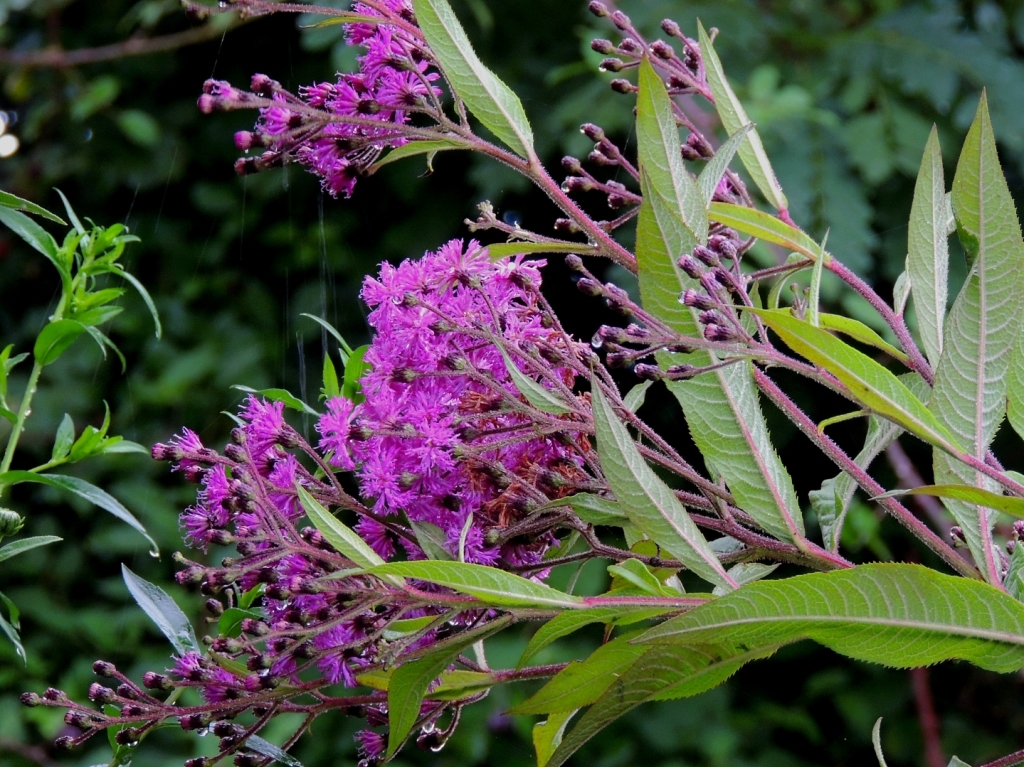
This Vernonia crinita ‘Mammuth’ really is- big. 2.5 m or so in my case. It holds the back of the peninsular and outgrows Miscanthus ‘Malepartus‘- so there you are. But, it is currently horizontal on account of the rain, yet still doing purple-mauve beautifully.
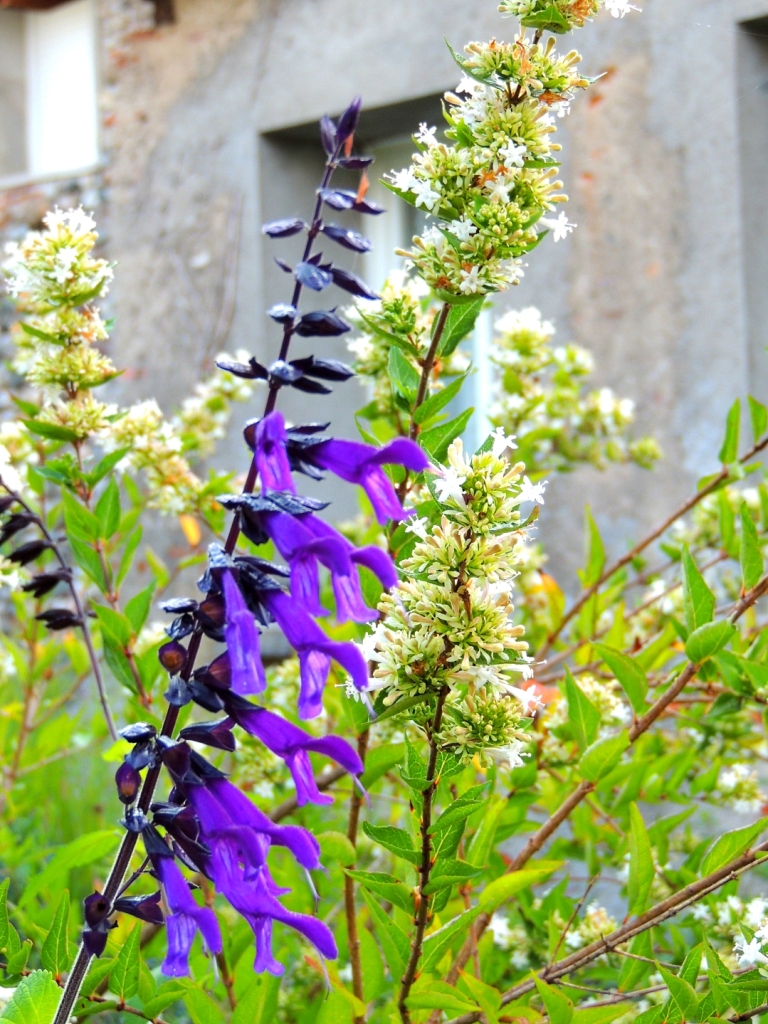
See? The good old Abelia.
